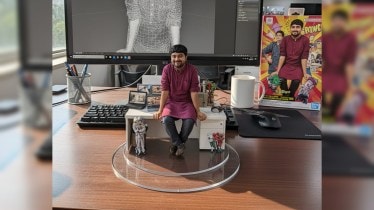Nano Banana trend: If you have recently come across a new social media trend that involves people creating and sharing 3D figurine images of themselves, and want to do the same for yourself, you have come to the right place. Google’s newest AI image tool is now capable enough to create a realistic 3D figurine image of any photo that’s shared by the user. The feature is powered by the latest Gemini 2.25 Flash Image model and can generate convincing image styles for free.
The process, which is free to use, leverages the power of Google AI Studio and is designed to ease user accessibility. Although the 3D figurine style is not the only one that you can generate, it demonstrates the power of the Gemini 2.25 Flash Image model.
How to create 3D figurine images using Google AI
To begin, individuals need only a free Google account and access to a fast internet connection.
– Visit Google AI Studio on your web browser, either on your phone or PC.
– After logging in, you can navigate to the right-hand panel and choose “Nano Banana (Gemini 2.5 Flash Image)” from the list of available models.
– Once the model is selected, the creative process is initiated with a simple image upload. The image need to be in JPG and JPEG formats for the process to work.
– You can then copy the following pre-written text prompt into the chatbox, which acts as the command for the AI to generate the 3D figurine. Here’s a sample prompt:
‘Create a highly detailed 1/7 scale figurine of the characters from the provided picture, crafted in a realistic style, and displayed in a real-world environment. The figurine is posed dynamically on a round, transparent acrylic base with no text, placed on a sleek, modern computer desk made of wood with a glossy finish. The desk is organised, featuring a MacBook and a few small accessories like a pen holder and a coffee mug. The MacBook screen prominently displays the the macOS desktop screen. Next to the monitor, a BANDAI-style toy packaging box stands upright, featuring vibrant, two-dimensional flat illustrations of the characters in dynamic poses, with the original artwork faithfully reproduced. The scene is well-lit with natural warm light streaming through a nearby window, casting soft shadows and emphasising the figurine’s realistic textures and fine details.’
– Once done, hit the ‘enter’ button and wait for the processing to happen in the background. Once the process is complete, you get the option to download the image to your device.
Note that the prompt can be changed as per your wish. You can always alter the styling, the elements and even the lighting.
ChatGPT introduced the trend a while ago
This 3D figurine trend surged just over a year ago with OpenAI’s ChatGPT. After the GPT-4o update that integrated powerful image generation capabilities, users would create highly personalised ‘chatbot figurines’ — hyper-realistic images of themselves as action figures or collectible dolls. By simply providing a photo and a descriptive prompt, people could generate digital toys complete with custom packaging and accessories.
